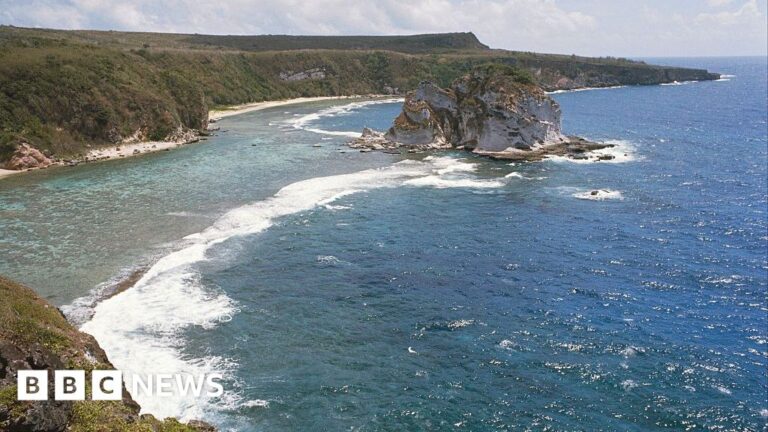Image source, Getty Images
- author, Jonathan Head, Saipan, Nadine Yousif
- role, BBC News
-
When Julian Assange published his trove of leaked files in 2010, sparking a global uproar over U.S. tactics in foreign conflicts, he probably never expected the lengthy legal battle that followed would culminate in a remote oceanic archipelago.
The Northern Mariana Islands are a collection of tiny dots in the Pacific Ocean that, until this week, were known for secluded beaches and wartime shipwrecks.
But China was briefly placed at the centre of a geopolitical chessboard on Wednesday that has been playing out in the shadows for years, from Washington, DC, to London and beyond.
Assange returned to Australia after pleading guilty in court in Saipan, the capital of the US island of Saipan.
There are approximately 100 district courts in the United States, but the Saipan court is the smallest, newest and furthest from the capital.
The self-governing American territory in the Western Pacific was chosen because Assange was opposed to traveling to the US mainland and because it is close to his native Australia.
Located about 3,000 km (1,800 miles) north of Australia, this vast territory consists of 14 islands.
Like other territories such as Guam and Puerto Rico, these islands are part of the United States, though they are not official states.
This means that about 50,000 residents are U.S. citizens but cannot vote in presidential elections.
The Northern Mariana Islands experienced the fierce Battle of Saipan during World War II and were occupied by the United States after the war.
Thousands of Americans and tens of thousands of Japanese soldiers died in this onslaught.
During Wednesday’s hearing, Judge Ramona Manglona referred to this bloody past in her closing statements.
She told Assange that Saipan marks 80 years since a battle in which Japanese civilians were ordered to jump off cliffs to their deaths rather than surrender.
Celebrating peace, she said she hoped the agreement that saw Assange released would bring some peace to him and his family.
These islands were once colonies of Spain, Germany and Japan, and did not officially join the United States until the late 20th century.
In 1975, the islanders voted to join the United States as a territory, and this status was officially recognized in 1986. The change gave the islanders permanent representation in the U.S. House of Representatives and granted the islanders U.S. citizenship.
As of 2020, about 60% of the island’s population were U.S. citizens, and the remaining 40% were foreign workers, according to data from the U.S. Government Accountability Office.
The majority of the population is of Asian descent, with Filipinos making up 35% of the population. The second largest group is Pacific Islanders, with Chamorros making up 24% of the population, according to the CIA World Factbook.
Saipan, the islands’ most populous city, has golf courses and sandy beaches that are popular with tourists from Korea and China.
One reason for the influx of Chinese tourists is that the Northern Mariana Islands is the only place in the United States where Chinese nationals can enter without a visa.
This has been a point of contention for some U.S. lawmakers, who last year urged authorities to require visas for Chinese tourists visiting the islands, citing national security reasons.

